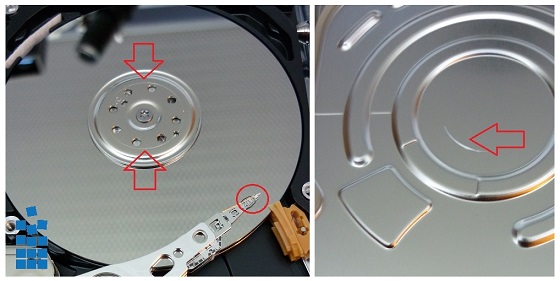
Is Professional Service or DIY Your Best Option?
Your portable HDD has a problem and you’re researching external hard drive recovery options. In this discussion we’ll examine your options, based on the symptoms. As always, an informed decision is superior to guessing!
Firstly, feeling pressure or taking hasty action can be damaging to any data recovery attempt, so try to detach yourself emotionally from the situation (if possible) before any irreversible decisions are made. A clear head could really be considered a prerequisite for data recovery!
When discussing a failed external hard drive with a potential client, I usually have two questions:
- How did it happen; and,
- What symptoms is the drive now exhibiting?
Having this information can make a world of difference and can open possible recovery strategies you may not have considered. Let’s review a few common scenarios:
SCENARIO 1: The dropped portable hard drive
Q. How did it happen?
A. “I was working with my portable drive on the sofa, attached to my laptop. I got up holding the laptop and forgot the drive was connected; it was jerked into the air then came unplugged from its cable, falling about half a metre and landing on the carpet.”
Q. What symptoms did the drive exhibit when next connected?
A. “I plugged it in again and now it’s making a beeping or buzzing sound. My computer detects a Seagate or Western Digital device is attached by USB, but the hard drive itself doesn’t come up at all.”
My preliminary conclusion: the drive has sustained a physical impact whilst the heads were parked. It was likely operating when you stood up and it was jerked into the air, which is a risk factor. However, the head crash (inferred from the beeping/buzzing sound it’s making) will likely have been caused when the drive landed on the ground and the heads were abruptly bumped from their park ramp and onto the platters.
Minor platter damage is possible and I estimate an 80% chance that the heads are still in sufficiently workable condition that I can recover most or all of your data with my equipment. This would be a Category 2 recovery and I should have it completed within 2 to 5 working days, depending on severity of damage and amount of data required. Send the drive in for a free inspection and quote for confirmation of findings and we’ll proceed from there by your direction.
SCENARIO 2: External hard drive knocked over on desk
Q. How did it happen?
A. “I was working on my computer when my cat jumped onto the desk, knocking over my upright external hard drive. It was running at the time, doing a backup from my computer, so when it landed on its side it made a terrible screeching sound and abruptly disappeared from my computer.”
Q. What symptoms did the drive exhibit when next connected?
A. “Whenever I plug it back into my computer, it makes a bad noise and detects as having zero capacity in Disk Management.”
My preliminary conclusion: the drive has sustained a physical impact whilst the heads were in play. Some platter damage is expected and I estimate a 90% chance that the heads are damaged and will require replacement for data recovery to be possible. This would be a Category 3 recovery and I should have it completed within 20 working days under standard priority, depending on severity of damage and amount of data required. Send the drive in for a free inspection and quote for confirmation of findings and we’ll proceed from there by your direction.
SCENARIO 3: External hard drive not powering up; was fine yesterday!
Q. How did it happen?
A. “The drive was working fine yesterday, then today when I got to the office my external HDD wasn’t detecting on my computer at all! It wasn’t bumped or dropped, it wasn’t improperly disconnected; it just seems to have stopped working.”
Q. What symptoms did the drive exhibit when next connected?
A. “I’ve tried the drive with three computers and different cables but it’s always the same: the light comes on but it doesn’t seem to spin up and it isn’t detected at all, on Mac OS and Windows computers.”
My preliminary conclusion: the drive has sustained electronic damage and should be fully repairable for data recovery purposes. Whilst a worst-case scenario could see this being a Cat.3 recovery (if the motor or head assembly has been damaged), in most cases this would be a Category 2 recovery or even a Cat.1 in some cases. Pending difficulty and parts availability, I could have it completed for you within 2 to 5 days and a full recovery is likely. Book the drive in for a free inspection and quote for confirmation of findings and we’ll proceed from there by your direction.
There are many variations of the above conversations and I have several of them each week with potential clients. Please feel free to call or email to discuss your own situation, I’d be glad to help you work out what to do if you’re feeling a bit stuck and unsure! You’ll find sympathetic, helpful and expert assistance here, should you decide to get in touch. For professional external hard drive recovery, you can find an estimate of my pricing on my Process and Prices page. As always, I offer a free inspection and quote so you’ll be able to make an informed decision on whether to use my services or possibly to even consider a DIY approach if safe to do so.
Whatever you do, try to be deliberate and considered in your actions. If you aren’t confident in any particular course of action, please stop and ask someone! You’ll find friendly and knowledgeable assistance on various web forums and online technical communities such as Whirlpool.net.au and Overclockers.com.au and of course, I’m always here to help if you’d like a professional opinion.
